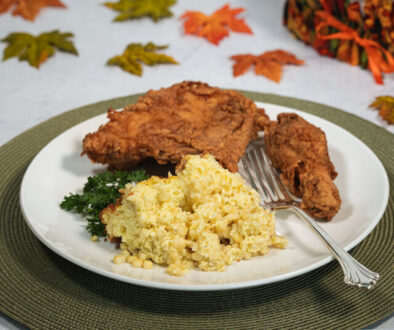Cool Beans
I feel sorry for beans. Don’t you? Forever a bridesmaid, never a bride, they almost always play a supporting role on your plate. Rarely have I found them served as an entrée—except when I was a child. Being on a tight budget, my mother soaked white beans overnight, cooking them with salt, port, and serving them with a bit of India relish and some crusty bread. Not my favorite supper, but it was filling.
Did you know that bean soup has been served every day in the United States Senate for over a hundred years? Apparently, it was requested by two different senators in the early 1900s, one of whom was the chair of the committee overseeing the Senate Restaurant who managed to pass a resolution requiring that the soup be on the menu every day. This tradition was only interrupted once, in September of 1943, due to wartime rationing and even then, only for one day. Today, you can sample it at the Capitol Visitor Center or in the Dirksen Cafeteria, which is open to the public. Or make it at home. Believe it or not, the recipe (two different versions of it) can be found on the Senate’s website.

Be careful which beans you decide to eat raw. Some beans, like limas, contain linamarin, which when chewed produce a cyanide-like compound. But don’t be too concerned. The limas we grow today (as opposed to those found in the wild) contain very little linamarin, and normal cooking methods destroy the enzymes that release the cyanide. Still, I wish I had known this fact when I was a little kid. It would have been an excellent reason to not eat the lima beans that were put on my plate.
Bean Counting
Globally, India is the largest producer of beans, although the U.S. is a significant source of dry beans like black, great northern, navy, pinto, and red kidney beans with 30 percent of them coming from North Dakota.
There are over 400 types and 40,000 different varieties of beans. But we tend to eat only about a dozen: black, cannellini, garbanzo, green, kidney, lima, navy, pink, pinto, soy, white northern, and yellow.
A bean is an edible seed that grows in a pod and is a member of the legume family. Most of them have pods that are inedible and are grown only for their seeds. But there are varieties where we eat the whole thing—pod and all—think string beans.
We tend to think of beans as being three types: snap beans (like string beans), shell beans (like limas), and dried beans (like pintos). However, these beans do not represent different types of beans; they simply represent a different stage in a bean’s development. Snap beans are harvested when the seeds are young and immature. Shell beans are eaten when the seeds are plump and fully developed but the pod is still fresh, and dried beans are exactly that. Their seeds are left in the pods until they are dry, and the pod is brittle. And they must always be reconstituted in liquid before consumption. According to Marian Morash, author of The Victory Garden Cookbook, “All beans go through all three stages but may only taste good at a particular stage.”
Health Benefits
Depending upon which source you believe, beans were first cultivated in Thailand somewhere between the 7th and 9th millennium BC but have probably been part of our diet since humans stood erect! There is good reason for that. Beans are probably the most inexpensive, easily acquired, and complete source of protein you will find. Rich in vitamins like B6, C, and K1, loaded with minerals like manganese, copper, magnesium, and iron and packed with fiber—move over kale—beans are a legume superfood.
The Musical Fruit
Have you ever wondered why baked beans or the ones in chili give some people gas but not others and why string beans don’t seem to bother anyone? The answer lies in how much sugar is in the bean itself and in the bacteria in your intestines. Beans contain several types of sugars, some of which cannot be broken down by the acids and enzymes in our stomachs. The bacterium in our intestines varies from person to person but if that bacteria can metabolize the sugars, hydrogen, methane and carbon dioxide are released in the process—hence flatulence. The more mature a bean is, the more sugars its seeds contain. So, the amount of discomfort you may experience depends upon what kind of bean you eat. Immature beans like string beans contain far less sugar than their mature counterparts so they are easier to digest.
The Has-Bean
Everyone loves Cape May for its sandy beaches, Victorian architecture, and great restaurants. But did you know that West Cape May was once the Lima Bean Capital of the World? Self-proclaimed as that title may be, West Cape May was once an important producer of lima beans. A lucrative contract with Hanover Foods brought relative fortune to the area until the early 1990s.
It all started in 1924 when the requirement that milk must be pasteurized led local dairy farmers to look for new ways to utilize their land. The soil here proved to be perfect for growing vegetables. But in 1929, the great depression combined with the invention of the canning machine caused farmers to move away from producing more expensive vegetables and discover the more affordable and easily canned Fordhook lima bean. A shelling house was constructed on Bayshore Road and a canning factory on Stevens Street. One thousand acres were dedicated to limas alone. And so it was for decades. But as tastes changed, people no longer gave a hill of beans about limas—especially canned ones.
In 1985, West Cape May, in an effort to honor its agricultural heritage and create a unique identity for itself, decided to hold a festival dedicated to limas. Five years later, the contract with Hanover Foods ended, and by 1992 only four farms remained. But the festival lives on and is now certainly the longest continuous lima bean festival in the world. There you will find the most creative uses of limas ever imagined. Their mild, nutty, velvety, sweet texture is transformed into soup, empanadas, pie, and even ice cream. It will make you wonder how they ever got such a bad rap.
Is Cape May full of beans?
No, not exactly. Other than haricot verts (French green beans) which are served as an accompaniment to everything from short ribs to swordfish, and black beans served with rice or in salsa at our Mexican restaurants, beans are somewhat elusive in Cape May, as I suspect they are in most of the United States. We couldn’t even find pasta e fagioli at any of our Italian restaurants, at least not yet this year.
But if you look hard enough you will find them tucked into dishes here and there. Maison Bleue adds haricot vert to their green salad and the Magnolia Room dips them in beer batter and serves them as an appetizer. A Ca Mia dresses white beans with a vinaigrette sauce and includes them as part of their antipasto for two, and the Mad Batter fills ravioli with them.

Black beans are turned into soup at Bella Vida and Lucky Bones and made into a burger at Carney’s and Elaine’s. Garbanzo beans in the form of hummus can be enjoyed as an appetizer at the Cricket Club and Lost Boy. They are also used as an accompaniment to grilled octopus at Peter Shields and the Pier House and served with a Poblano pepper at the Magnolia Room. Primal crisps them up and serves them with artichokes. Soybeans appear as edamame at Port and as tofu at Iccara and the Mad Batter.
But the only way to enjoy lima beans in Cape May today is in the form of succotash, i.e. mixed with corn. The Washington Inn, Grana, and Port all top it with delicious grilled fish.
National Bean Day is January 6th. Yes, there is a day for everything, even limas have a day of their own. Overlooked, under-respected, and hated by some (including me as a child) they need all the help they can get! To quote Jennifer Kopp, “The lima bean reigns notorious as the queen of spurned vegetables, perhaps sharing its throne only with the oft-scorned Brussels sprout.” And so, April 20th was deemed National Lima Bean Respect Day earlier in this millennium. Yes, we realize that it is also the day people celebrate cannabis. But next spring, on April 20th we are going to show our respect by topping some succotash with seared scallops and bacon bits. Too bad limas won’t be in season yet!



